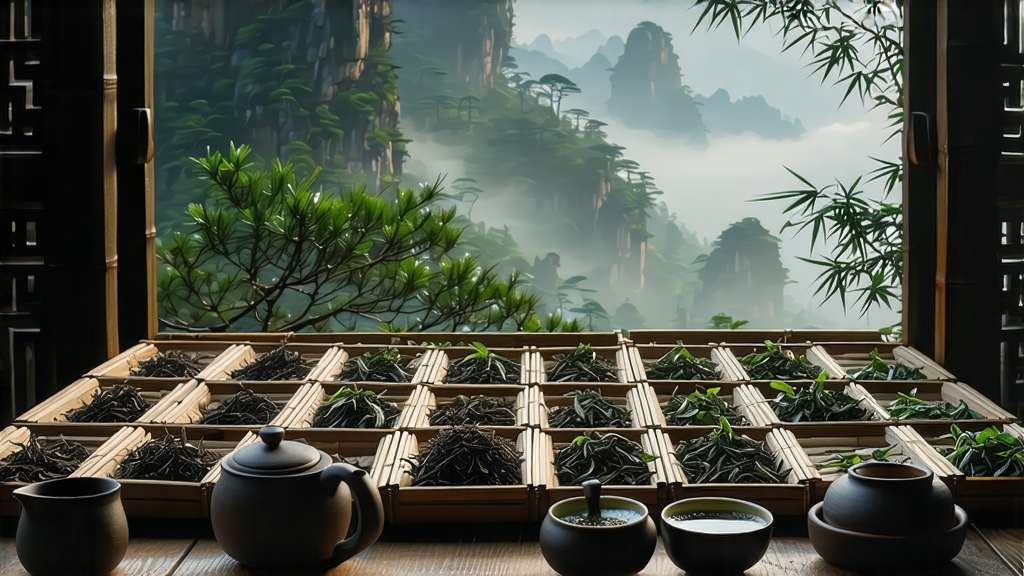
Ask most tea lovers to name a Chinese black tea and they will answer Keemun or Dian Hong; ask a historian which black tea came first and the reply is always Lapsang Souchong. Born in the cool, mineral-rich gorges of the Wuyi Mountains in northern Fujian, this smoky, wine-dark leaf is the primogenitor of every red-black tea that followed. Its story begins in the late Ming dynasty, around 1604, when soldiers passing through Tongmu village delayed the usual green-tea drying schedule. To save the harvest, villagers rushed the leaves over open pine fires, inadvertently creating a new aroma that Dutch traders on the Amoy docks declared “bohea” and carried to Europe. Within decades the West was obsessed; the English East India Company listed “Souchon” in its 1667 ledger, and Catherine of Braganza’s dowry chest that same year helped fix black tea at the heart of British court life.
Geography is the first secret. Tongmu lies inside a national nature reserve where the Wuyi range funnels moist Pacific air into a perpetual mist. Day-night temperature swings slow leaf growth, concentrating sugars, amino acids and aromatic oils. The soil is a stony, slightly acid laterite strewn with granite shards; drainage is so sharp that roots plunge two metres, mining potassium and rare earth elements that translate into a cool, stony sweetness in the cup. Only six natural villages—Tongmu, Guadun, Miaowan, Gaolou, Hengdu and Dafang—may legally sell authentic Lapsang Souchong under China’s 2002 geographical indication law. Outside that radius, even identical cultivars and smoke give only “Wuyi black,” not the coveted Zhengshan Xiaozhong.
Cultivar matters next. The original plant is the xiao zhong qi zhong, a compact, slow-flushing bush with olive-sized leaves covered in fine down. Over centuries farmers have selected two clonal variants: the more fragrant “ye cha” (wild strain) and the higher-yielding “rou cha” (tender strain). Both are kept short by plucking, encouraging a hedge-like canopy that maximises lateral buds—the small, insect-bitten tips that oxidise into honeyed notes.
Processing is where craft turns leaf into legend. The harvest window is only seven days each spring, when two leaves and a bud reach the “small open” stage, still pale jade at the edges. Pickers start at dawn, laying the leaf into shallow bamboo baskets to avoid bruising. Once back in the three-hundred-year-old wooden loft, the leaf is withered over a gentle heat of 28 °C produced by smouldering pine embers; this “soft smoke” stage lasts eight hours and already imparts a whisper of resin. Rolling follows, done on split bamboo trays with a press-twist motion that breaks cell walls just enough to release enzymes without shredding the leaf. Oxidation is brief—only 75 minutes—because the goal is a copper-red colour rather than the deep chocolate of Assam. The critical step is the final hot smoke: pinewood logs, free of resinous heartwood, are burned down to glowing coals, then covered with a layer of damp pine needles that release a steady, cool white smoke. Woven bamboo sieves holding the oxidised leaf are stacked three metres above this fire for six to ten hours, absorbing volatile phenols that bond with the leaf’s own tannins, creating the signature note of longyan—dried longan—plus layers of sandalwood, nutmeg and burnt caramel. Master smokers judge readiness by sound: when the rustle of leaf becomes crisp like autumn chestnut husks, the tea is done.
Grades unfold like Burgundy crus. The top tier is Zhengshan Xiaozhong “Original Smoke,” made only from buds, yielding a liquor the colour of antique sherry and a scent that oscillates between pine sap and dried lychee. Next comes Zhengshan Xiaozhong “Light Smoke,” given only two brief fumigations, allowing a cocoa-sweet mid-palate to dominate. Finally there is “Wuyi Smoky,” produced outside the core zone with faster, hotter fires and often blended with caramel flavouring for the Russian market; purists dismiss it, yet it remains the tea most foreigners first identify as Lapsang Souchong.
To brew Lapsang Souchong well, abandon teabags and kettles. Use a small Yixing zi-sha teapot or a gaiwan